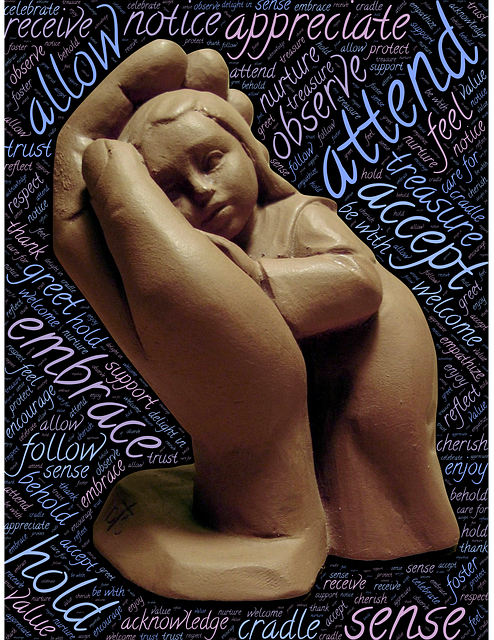Sometimes it is difficult to show compassion when we are suffering or in pain ourselves. When we experience pain, particularly if it is intense and/or constant, we tend to become self-absorbed. A lot of our attention, energy and focus go into managing the pain whether by distraction or different forms of alleviation such as painkillers, acupuncture or somatic meditation.
What we then tend to overlook is that there is “pain in the room”. No matter what we are doing with or for others, such as sitting in a hospital waiting room or conducting a workshop, there are always people in the room who are suffering physically or otherwise. We do not know what pain people are carrying – we can be fairly confident that suffering and pain exist in the room as it is part of the human condition.
Interestingly, neuroscience increasingly confirms that, with both animals and people, compassion for others is a basic, natural inclination. In contrast, it seems that self-compassion does not come naturally. This is explained, in part, by the fact that our brains have a negative bias as a self-protection mechanism. This safety bias plays out through our amygdala, the most primitive part of our brain. As we experience life, this negative bias gets reflected in our negative thoughts which means that we are often self-critical and “hard on ourselves”.
So self-absorption, because of our own pain and suffering or through dealing with negative thoughts, means that our natural inclination to demonstrate compassion to others is suppressed or blocked out.
This is why loving kindness and compassion meditation has a role to play in our lives. In presenting a series of loving kindness and compassion meditations during the Mindfulness and Meditation Summit, Sharon Salzberg offered a series of meditations, each with a different focus. The meditations included loving kindness for a struggling friend, a difficult person, a benefactor and for a group. These are all designed to take us outside of ourselves and sensitize us to the thoughts and feelings of others.
Daniel Goleman, in his recent co-authored book, identifies compassion as an “altered trait” – a sustained trait resulting from loving kindness and compassion meditation. The authors contend that neuroscience consistently confirms that compassion meditation results in increased kindness and generosity, even with beginner meditators.
As we grow in mindfulness through compassion meditation, we are more able to move beyond self-centred preoccupation in our thoughts and actions, and manifest real kindness and compassion towards others.
By Ron Passfield – Copyright (Creative Commons license, Attribution–Non Commercial–No Derivatives)
Image source: courtesy of jia3ep on Pixabay








